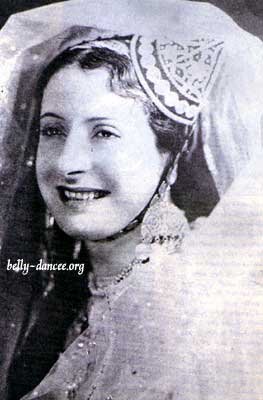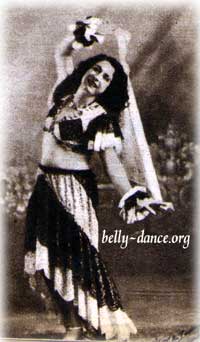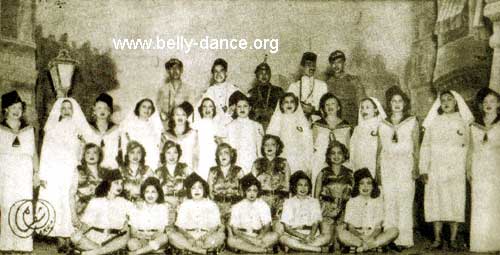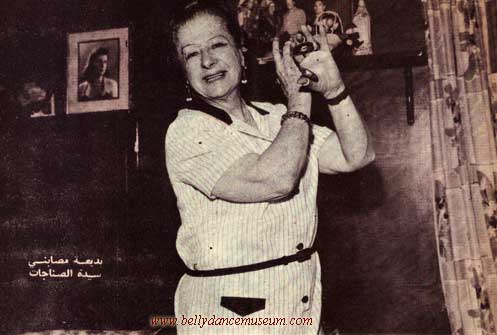Bellydance superstars of the past
badia masabni

During the 1940s Giza's celebrated Music Hall - Casino Badia - made world history during world war 2 when officer, swindler and spy intermingled under the comforting 'torpedoes' of Badia's famed belly dancers. Failing to win her over, Hitler's propaganda machine found it necessary to attack Madame Badia accusing her in turn of being a traitor, a dangerous spy and a British secret agent. It was common knowledge that Churchill's son and the Duke of Gloucester had capered in her Casino.


One of the mayor contributions she made to oriental dance was lifting it up out of the traditions of chaabi or popular dancing. Where before the belly dancer had a limited repertoire of arm movements she got the idea not only holding them out to the sides, but lifting them higher above the head and using more flowing gestures later known as snake arms. Not only did Badia Masabni's ideas influence how dancers carried their arms but equally how to use more space on the stage. The ghawazee and almeh were performing almost entirely on one spot. Now the dancers were required to use the entire stage which was bigger than that what they were used to. Traditional dancers mostly improvised but Badia Masabni pioneered the use of choreography. As the public in the back couldn't quite see the fine movements, props like the veil were incorporated in the dance show. Perhaps she was inspired by one of Isadora Duncan's (1877-1927) shows in Paris. A veil scored more effect upon a distance audience. In fact the use of veils and a two-piece sequined costume were inspired by Hollywood film productions as many of the movie posters in this museum prove.
On top of that, another great idea of madame Masabni was adding trained classical musicians to the traditional line up of riqq, derboukka and ney or zurna. The taqsim or musical improvisation altered the straight rhythm of the maqsoum or baladi beat. Takasim were done on the so called shifte telli or al wahda attawilla or otherwise on the masmoudi, a slow beledi beat. The shifti telle rhythm was in fact not typical egyptian but eastern and the rhythm travelled along the silk road from central asia to Turkey and Greece, at that time the Ottoman empire. Due to the lower volume of the shifte telli, other instruments could stand more in the picture during the improvisation parts. Besides percussion the orchestra line-up included some extra violins, a cello, oud and accordion. The compositions became more complex so the movements had to match. Musical arrangements altered by improvisation inspired the dancers to do a show that pleased both the occidental and the oriental public. Now all these elements together started to shape the belly dance into raqs sharki or oriental dance. The name belly dance came in fact from nineteenth century French travelers who witnessed the unfamiliar hip movements of the ghawazee and described it in their travel stories as "danse du ventre" or dance of the belly. At that time - before 1900's - the name fitted the dance but as we just have seen, the description became soon too limiting.
It was at Badia's legendary cabaret during the the 1930's and 1940's that the two most influential and innovative women of twentieth century oriental dance were trained by Badia Masabni - who did coach her dancers extensively. They became the most famous and extraordinary dancers of the middle of the 20 th century: Tahiya Carioca and Samia Gamal.>
